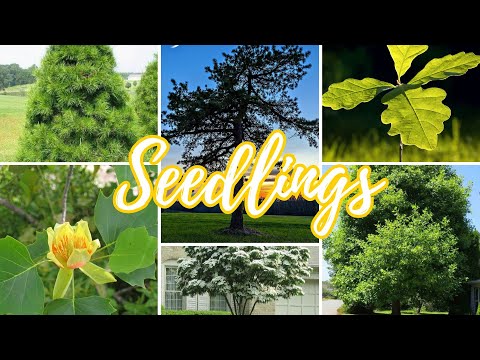Sweet Gum Seedlings for Sale | Liquidambar styraciflua
Plant Sweet Gum Seedlings and watch the majesty of nature. From blazing star-shaped leaves with mesmerizing fall color to wacky spiked seed pods that texture the ground below, there is no other tree growing native in North America quite like this one. Extracts of this tree have been traditionally for medicinal purposes, especially the resin substance produced that can be chewed as gum.
Plant Details of Sweet Gum Seedlings (Liquidambar styraciflua)
Family: Altingiaceae
Light Requirement: Full Sun
Water Needs: Moderate
Height: 60-75 ft.
Spread: 40-60 ft.
Growth Rate: Moderate - Fast
Bloom Time: Spring
Flower Color: Inconspicuous yellow & green
Wildlife Value: Provides foot & nesting materials
This tree grows best when supplied with even, consistent moisture. Full sun is non-negotiable for healthy growth at all stages of development. It is a moderately fast grower, adding up to 2 feet of height every year. It prefers loamy, acidic soil. Grown for its fall color, it produces a full range of foliage colors from green to yellow, orange, and red.
Landscape Uses and Maintenance for Sweet Gum Seedlings
Spiky seed balls deter mammals and other garden pests, mulch young seedlings, do not let them dry out, may need to clean up seed balls
Sweet Gum Seedlings are sensitive to drying out, so it is important to lock in water as much as possible. To contribute to consistent moisture, apply a few inches of mulch around the tree's base. This will also help prevent competing plants from taking the young sapling’s nutrients.
Along with being grown for its gorgeous fall color, this tree is a fantastic addition for shade in a landscape. Depending on preference, it may be necessary to clean up the spikey seed balls for lawn tidiness. However, these fallen seed pods will deter pest mammals from browsing plants.
Noteworthy Characteristics of Liquidambar styraciflua
Sweet Gum Seedlings will eventually produce their well-known spiky seed balls known as ‘gumballs’ between 20 and 30 years of age. The leaves are pointed, forming a distinct star shape with 5-7 lobes.

Exposure
Sweet Gum Seedlings thrive in full sun to partial shade. They require a minimum of 6 hours of natural sunlight daily for optimal growth but can tolerate some shade. Plant them in well-drained soil to ensure healthy development.
Height at Maturity
Over 25 Feet
Usage
Restoration
Shipped As
Bare-root
Ships
UPS
Planting Zones
5-9




